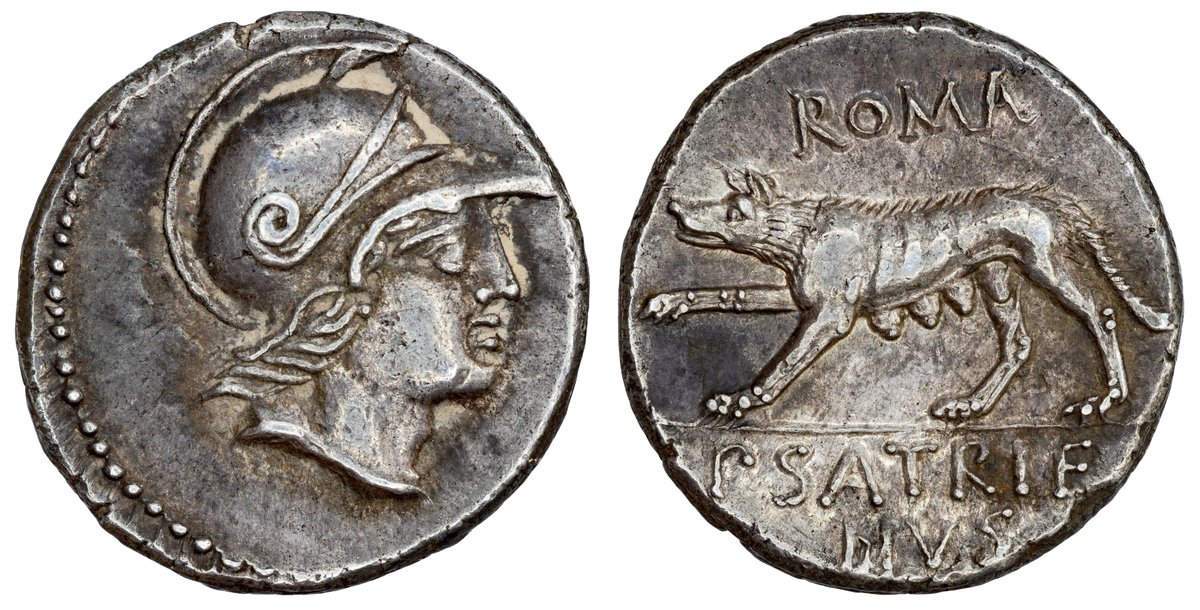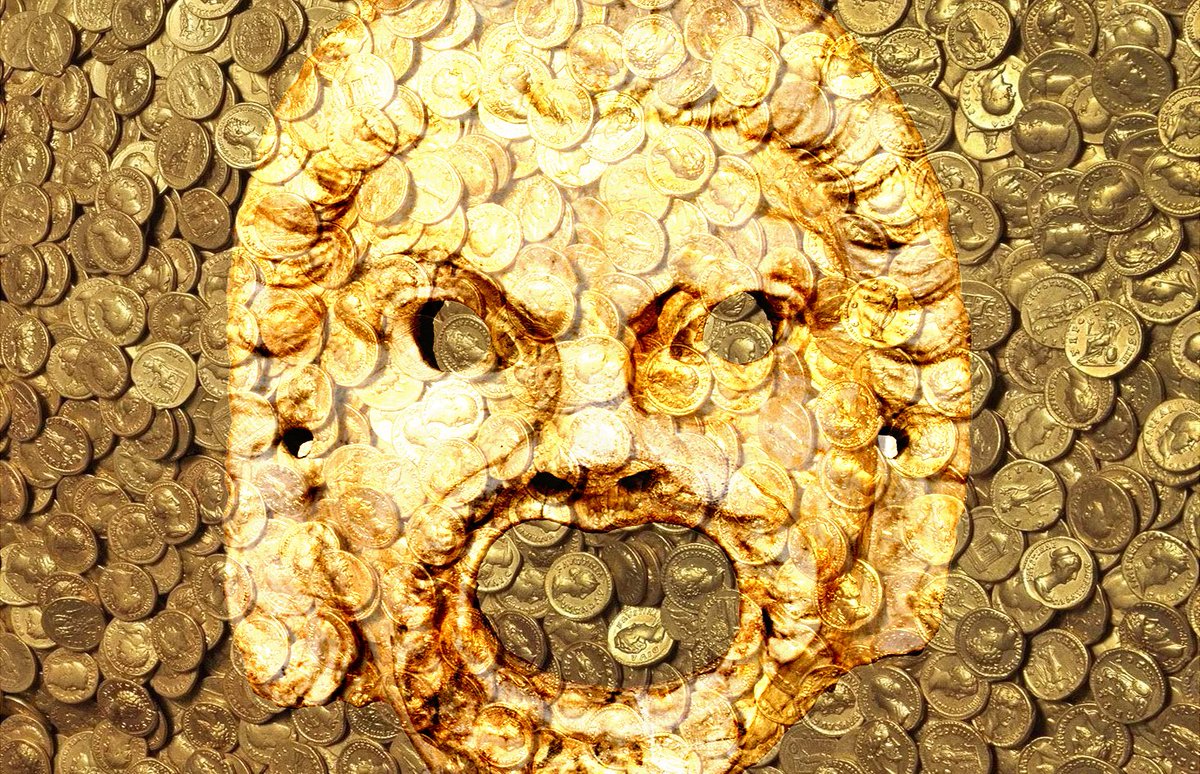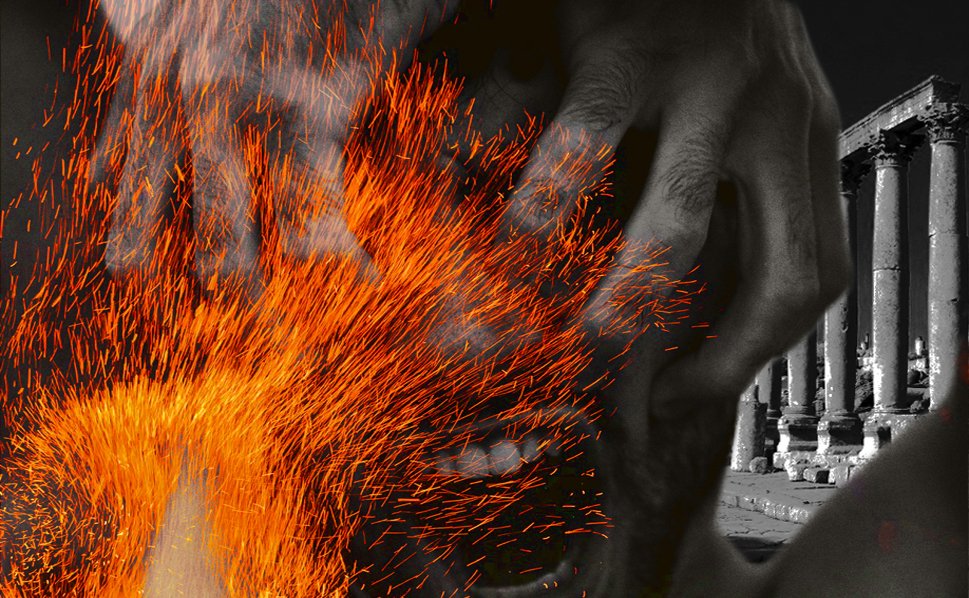
1) New coin: Though I only recently added an excellent example of Publius Satrienus’ she-wolf denarius minted around 77 BC, I was drawn back to the series when I was able to acquire another intriguing example that offers a rare insight into the processes of the Roman mint.. 

2) Having explored the imagery of the type in my previous blog post, I won’t pause to re-examine its depiction of the famed she-wolf here. Do read my recent post here for an in-depth look at Rome's fierce but nurturing matriarch: harneycoins.com/post/publius-s… ...
3) As with many other Republican issues, the coin type is notable for its use of 'control marks', numbers or symbols designating the precise dies used to strike obverse and reverse, possibly as a means of quality control or a systematic method to keep track of large coin issues.. 

4) Control marks can provide evidence towards intriguing questions: How many coins were struck within a series? How long did coin dies last? Did obverse or reverse die wear out more rapidly? How many engravers were employed at the mint and how much artistic variation was allowed? 



5) My last Satrienus denarius was struck with the 34th obverse die of what we know were around 105 created for the issue. Below it is shown with a surviving example from the first numbered die, labelled simply “I”, which you would be forgiven for assuming was the first die made. 

6) My new coin is a fascinating rarity: one of about 10 surviving examples with no numerical control mark and one of the finer condition specimens. The lack of any numeral and its fine style suggest this obverse die may be the 'master' or prototype engraving for the series.. 

7) The denarius then, while enjoyable for its artistry and symbolism in its own right, may be seen as evidence of Roman mint workers following a production process that involved 'master' copies, examples of which might even have been made available to subsequent engravers? 

8) It is even tempting to imagine engravers working from a large-scale artwork for each coin issue, displayed in the engraving room for the men to use as their model, though this is just imaginative conjecture! 

9) Please visit my blog post on the new coin for a more detailed exploration of its background and significance. (3 mins reading) harneycoins.com/post/another-p…
10) A couple of final views of the denarius in hand - since with modern photography it is easy to forget that these intricate designs, engraved by hand and eye with simple tools over two millennia ago, are only millimetres across! 



Explore this denarius and my other Roman coins in my galleries here: harneycoins.com/republican?pgi…
• • •
Missing some Tweet in this thread? You can try to
force a refresh





















